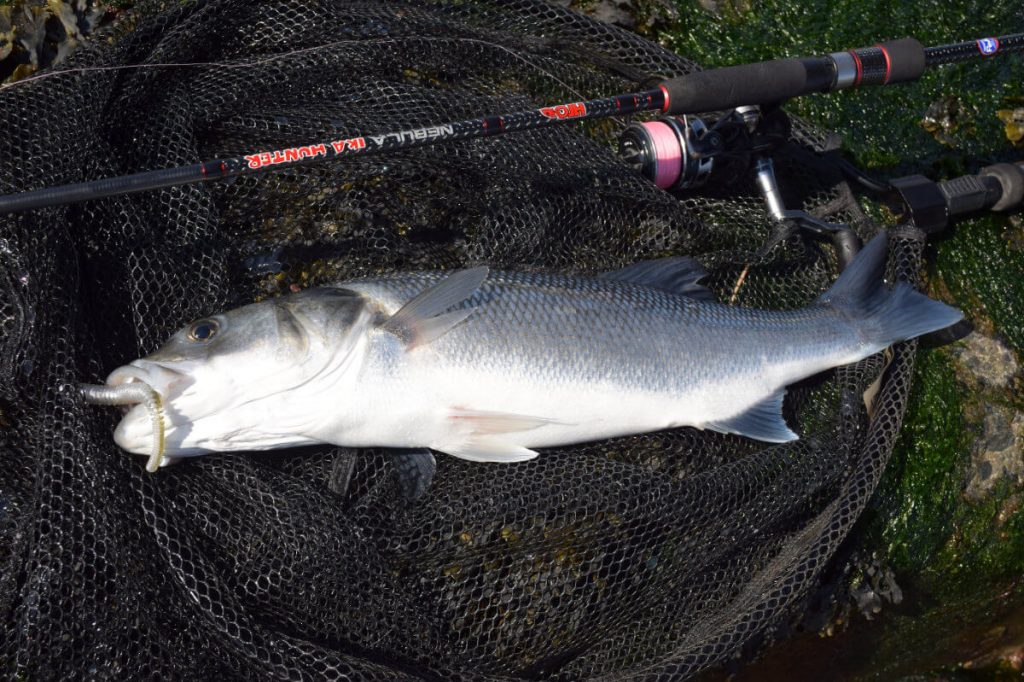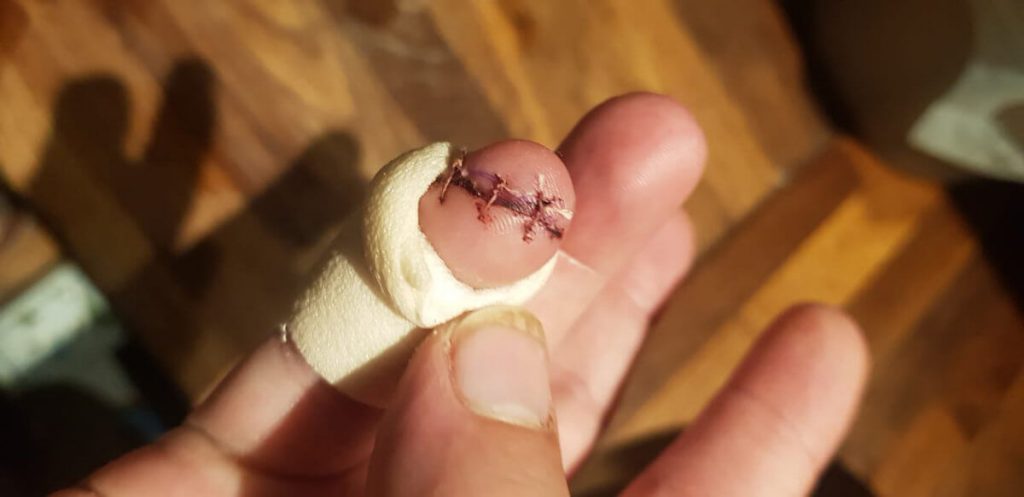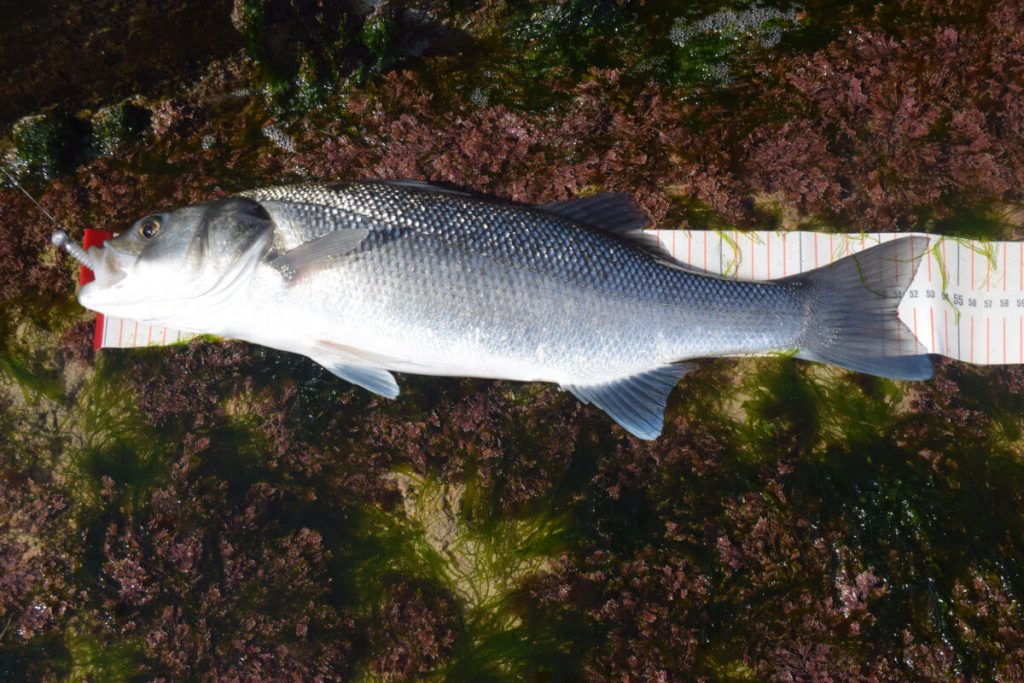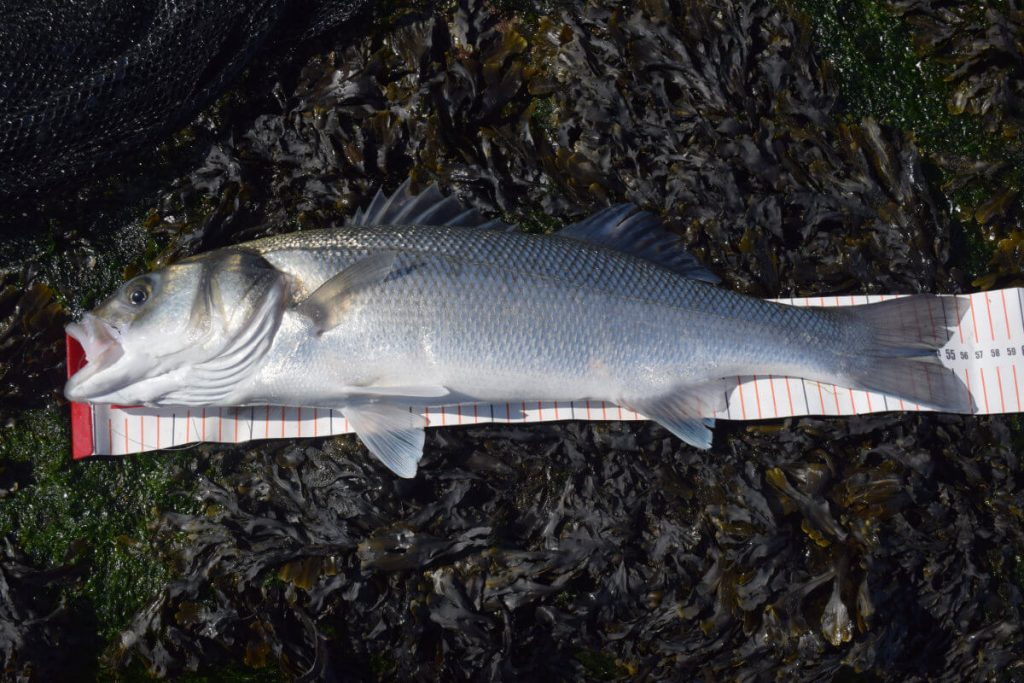With restrictions finally eased in Scotland, I was released from my worn out marks in the city of Edinburgh. For months I had been dreaming of being able to fish the open coast outside of the city, and desperate to try some new HTO gear, I hopped in the car and headed out in the hope of bass.
There were three pieces of tackle I wanted to put to the test. Firstly the HTO Hip Bag. Despite being quite compact, this bag managed to fit my Schlugg box (26cm by 18cm), two tubs of Gulp, my dropshot gear, and jighead box, all in the main compartment. Leader material and half a dozen packets of soft lures went into the zippered pocket on the front of the bag. Pliers went in the dedicated holder, and the fantastic addition of a net or rod holder on the side of the bag took the new HTO Folding Net Head and HTO Telescopic Handle Combo. Despite packing a fair amount of kit, it was still very comfortable and brilliant to have all my tackle organised and to hand when I needed it.
The other item of tackle I was keen to put to the test was my HTO Nebula IKA Hunter rod.
At 2.65 meters long and with an EGI weight of 2.5 – 4.5 (roughly 8-30g casting weight), it fits firmly in my favoured weight range and length for bassing from the shore. Despite being a dedicated squid rod, it makes an amazing bass rod for working HTO Schluggs rigged on jigheads. Firstly, the rod has the feel of a stepped-up LRF rod. It sports a tubular tip, and, like the res of the HTO Nebula range, a thin, modern blank.
Smaller twitches feel no different to any other fast actioned rod in the Nebula range. Only when you do a larger lift of the rod does the blank start to curve a bit more throughout the length of the rod. At no point do you lose any sensitivity, and this sensitivity allows me to work exposed hook lures through some snaggy ground purely by feel and without snagging! Being a progressive actioned rod, it loads up beautifully on the cast and was powering out a Schlugg on a 10g jighead with ease. I was convinced I had gained a few more yards in casting distance.

My previous visit to the mark was in November 2020. A trip that, despite catching some great mullet and bass, had ended in disaster! After catching a bass in the first ten minutes of fishing, I played and landed the fish. As I went to unhook it, I placed my hand on the fishes flank. At this point, the bass took great offence at my careful unhooking technique and flapped madly. This act of spikey defiance managed to drive a dorsal spike right through my little finger, whereby the spine snapped off, leaving a new and novel type of ultra painful piercing! At first, I was unsure of what had happened, knowing only that I had got spiked, and I carried on fishing. It was only when I looked at the wound did I realise the bass spine was still in my finger.
After a couple more fish, I decided I had better let a professional look at my injury. This was still mid pandemic, and the thought of having to go to the accident and emergency was an added anxiety to an already anxious time. After a couple of hours with nurses clustered around for a look at an injury they had never seen before, they (despite trying) decided I needed an operation to remove the spine. I was booked for the next day, where two surgeons and four nurses wheeled me in and cut out the spine.
Crazy, despite having caught thousands of bass, I had never dreamed of picking up such a one-off injury and felt pretty guilty for making a team of ten folk deal with my hobby based injury mid pandemic.

All this was going through my mind as I approached the mark at low tide. It was bright and sunny and pretty calm, not the ideal bass conditions, but optimism drove me on. The IKA Hunter rod was paired with a 3500 size reel, 1.2 PE HTO Nebula X* Braid, a 20lb HTO Nebula FC, fluorocarbon leader with a Schlugg mounted on a 10g 2/0 football jighead.
My favourite technique for working Schluggs for bass involves using the current to my advantage. This mark has a strong cross-current and a rocky channel. The bass push into this channel as the tide floods, searching amongst the snaggy ground for crabs, blennies and other baitfish.
I cast the rigged Schlugg slightly up-flow and allow a slow fall to the bottom. I let the lure pause on the seabed until the current pressure on the line lifts the lure up. I give a couple of jigs up with the rod and allow it to fall again, and slowly my lure bumps across the bottom, hopping up around five feet before settling again.
I have ultimate confidence in this technique and especially in the Schluggs bass catching properties. This allowed me to keep plugging away as the tide started to flood, with the full confidence that if I put this lure near a bass, it would attack it.
About two hours into the session, I made a long cast and allowed the lure to sink with the current. A small crosswind had started up, which put a bow in the line. Despite this, halfway through the retrieve, I felt a solid “thunk” and struck into the first bass of 2021.
Now the IKA Hunter rods properties got to show off as the blank curved round in a great progressive ark. It felt good even though the bass was fighting hard. At no point did I worry about the delicate single hook keeping the fish on the line. The rod cushioned everything and allowed me to lean into the fish to get it close enough to the net.
This is where the handily positioned HTO Folding Net Head came into play. Because the net holder on the HTO Hip Bag has three popper fastenings and some velcro, it was easy to grab the seam and release the net. With one hand, I quickly flicked open the net and extended the handle. This allowed me to reach down the steep rocky ledge and guide the bass into it.
It was a good bass too, measuring 53cm and the first bass after lockdown was landed. I took some pictures, released the bass and got back to working the Schlugg over the rough ground of the flooding tide.

Sure enough, after half an hour, another bass struck, and this one felt more powerful. Again the amazing playing action of the IKA Hunter rod came into play and that progressive fighting curve made for a truly addictive fight. Again, it cushioned that hook, and soon I had a fantastic 57cm bass in the net.

I was for sure riding high on the whole experience. Firstly, it was amazing to have the opportunity to catch bass, but doing it with the perfect tackle for the job was extremely satisfying. The fact that the fish caught were a couple of belters, especially for the east of Scotland in early spring, just added to my immense satisfaction.
I can thoroughly recommend the HTO Nebula IKA Hunter rod for working soft lures, especially HTO Schluggs. For me, it's the perfect tool for the job, and I wouldn't change a thing about it. This will be my number one tool for this type of fishing, and I can't wait until the squid turn up in the summer when this rod will show more of its fantastic capabilities.


